Congratulations! If you’ve landed on this post, you probably have received orders for moving overseas or are interested in it. Some people don’t want to PCS overseas, but it can be the most amazing and enriching experience.
You might already have loads of questions, and I will do my best to answer any that you may have. Feel free to also utilize the comments section! PCSing overseas feels so much more complicated with all of the different paperwork required such as overseas screenings, no-fee passports, etc.
That’s why at the bottom of the page, I’ve included the complete timeline of my move overseas from orders to receiving the HHG. I know this would have been extremely helpful to me when I was questioning everything, and hope it will be a benefit to you.
I have also included the steps taken to PCS Overseas with a pet. This can be an extremely complicated process that costs thousands for some military families. Thankfully I only have one small cat, so I didn’t have the expensive cargo fees. However, I have detailed all the vaccinations and paperwork I completed.
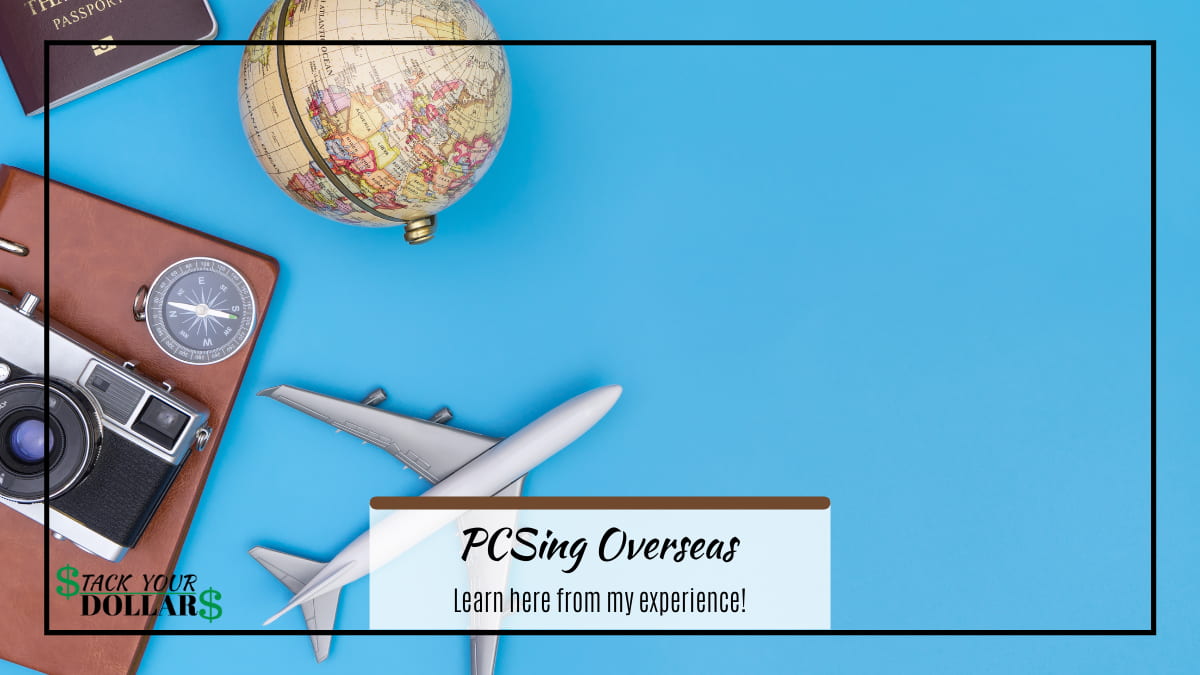
This post may contain affiliate links as a way to support the costs of this website (at no additional cost to you); however, I won’t recommend products I don’t believe in. View my full disclosure at the bottom of the page.
What is PCS in the military?
First off, what in the world is PCS? It basically means you’re moving. It’s one of the many military acronyms that you’ll have to memorize. PCS stands for Permanent Change of Station. If you’re PCSing overseas, that means you are moving to OCONUS.
CONUS: The 48 Contiguous States (which means the ones that share a border).
OCONUS: International locations in addition to Hawaii and Alaska.
Do you get money for PCS?
The military will help pay for travel and relocation expenses. There are a few different types of entitlements that are available.
Entitlements:
- TLE (Temporary Lodging Expense): TLE is an allowance that reimburses for temporary lodging and meals while PCSing in CONUS. It typically allows for 10 days that you can split in any way between duty stations. Ex: 3 days at losing station and 7 days at gaining station. However, only 5 days are currently allowed at the losing station when going overseas. (For more information and updates, view the Joint Travel Regulations (JTR) 050601)
- TLA (Temporary Lodging Allowance): Reimbursement for lodging and meals while overseas and waiting for housing (up to 60 days).
- Per Diem: Reimbursement for food and lodging during travel days. Notice that TLE and TLA are while AT the departing/gaining station, and Per Diem is the in-between when traveling.
- DLA (Dislocation Allowance): DLA is given to help offset some of the costs of moving and setting up a new home. The amount depends on rank, but it is currently at least $2,400 with dependents.
Read More: Check out this post on Military Pay to learn more about different entitlements and deductions.
How long does it take to get PCS money?
According to the Defense Logistics Agency, it can take up to 2 weeks to receive your reimbursement for PCS costs once you turn in the forms and receipts. However, it really depends on the efficiency of the command and how fast they process the paperwork.

It would be beneficial to save up throughout the months before PCSing. This will help you avoid running up credit card debt and other financial burdens. Get my free PCS Countdown Money Challenge among others.
Move Types
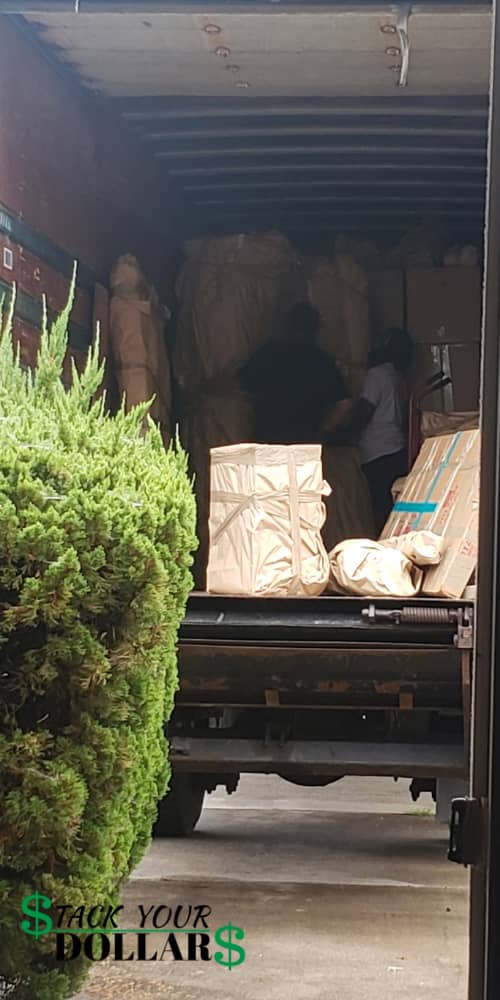
When you PCS overseas, you are allowed several different types of moves to take your belongings. They include:
- HHG (Household Goods Move): The military contracts a moving company that will take care of the moving of your household.
- UB (Unaccompanied Baggage): A smaller, expedited move where you can send some of your belongings. This move does not allow furniture apart from some baby items.
- NTS (Non-Temporary Storage): Long-term storage of your belongings when moving overseas. This is useful in case there are items your host country doesn’t allow or if the number of things you own won’t fit in the country’s smaller homes.
- Privately Owned Vehicle (POV) Shipment/Storage: When traveling OCONUS, the government will pay to store or ship one vehicle. Some countries do not allow the import of cars, or the steering wheel might be on the opposite side than is required.
- PPM (Personally Procured Move) aka DITY: Last and the least likely allowed is a PPM move where you take care of the shipment of your things on your own. This move is not typical when going OCONUS unless the PCS area is within the U.S.
Overseas PCS Checklist
From looking at other peoples’ experiences, it seems that everyone has different requirements for this process by base/ command. For example, I needed the hard copy orders before I could pick up the overseas screening packet. However, other people were able to pick it up and fill it out, then only needed the orders to submit it.
What this means is that your process might go a little differently, but this should be all the steps that you’ll have to take at SOME point.
Pro Tip: Get a binder like this to hold all your documents. It will be especially convenient once traveling and needing to have the different documents on hand.
- Get selected for orders
- Research the new base and get started on setting up doctor/dentist appointments, vet visits, etc.
- Receive Hard Copy Orders
- Pick up your overseas screening (OSS) packet and get it filled out by your doctor and dentist. Once submitted, you’ll receive an appointment for review (part 2). After it’s approved, you can move on to the next steps.
- Schedule your move on the DPS Website. (Tip: If you receive the warning page, click the white area and type “thisisunsafe” then press enter.) You might also benefit from the Military OneSource moving resources. NOTE: You can schedule your HHG, but without the DEA it will go to storage until you receive and upload the DEA.
- Apply for DEA (Dependent Entry Approval), then submit to the transportation office for the HHG once received.
- Set up an appointment for No-fee passports.
- Adult dependents must complete the Antiterrorism Awareness Training online.
- Reserve a room to stay in at your gaining station.
- Do prep work for your move shipments and decide what you will carry with you. Creating an inventory list is extremely helpful (especially in cases of missing items).
- If you have a pet, you will need to reserve a pet spot on any commercial flights. You may also need to get a Health certificate before traveling. It is valid for 10 days. Tip: For the in-cabin pet spot, we are using this soft-sided pet carrier, which fits the dimensions for most airlines’ rules (or can be squished a bit to fit).
- Say bon voyage and hello to a new experience!
My Overseas PCS Schedule of Events
This is everything I did in preparation for the move (as far as my bad memory can recall). If you have any questions, comment below or email me and I will reply and update this with the answer as well.
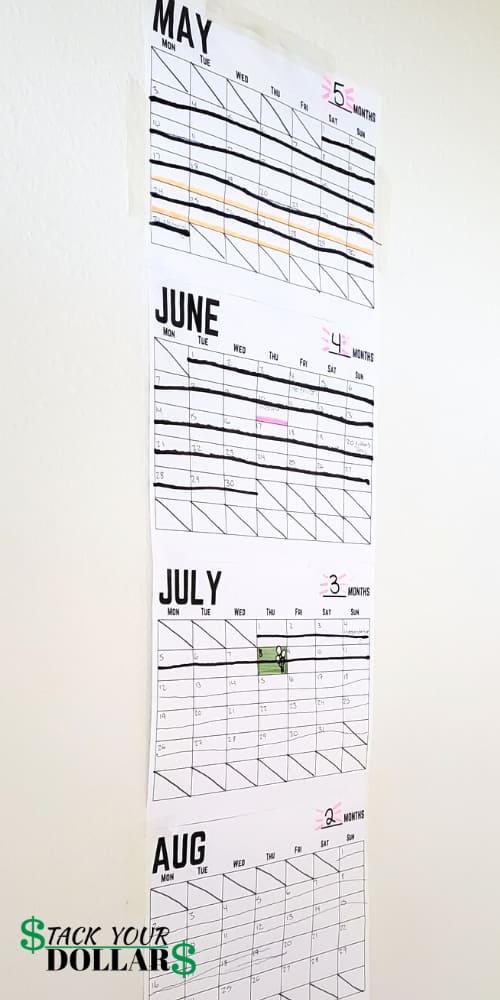
PCS Countdown: 9 Months
- Jan 3rd- Got selected for orders
- Jan 26th- Purchased an airline-approved soft-sided pet carrier: I got this early so that I can start carrying my cat around in it to the vet and get her comfortable. I leave it open in the room and she sometimes goes in it to sleep.
- Feb 3rd- 1st Rabies Shot: I looked into PCSing to our host country and it involved a 6-month pet quarantine after 2 rabies shots 30 days apart. It was very important to get started on this process right away.
- Mar 11th- 2nd Rabies Shot & FAVN Test: My cat received her 2d rabies shot and had blood drawn to test the rabies antibodies amount. Once this test was done, the 180-day pet quarantine began. It would end on September 7th.
- Mar 22nd- Hard Copy Orders: Once received, we were able to pick up the dependent OSS at the naval medical center.
- April 2nd- Received FAVN results
- April 2nd- Service Member OSS Part 2: I, unfortunately, don’t remember when the packet was turned in, but it was a very quick process due to recently having his annual visits. He only had to get signatures then submit the paperwork.
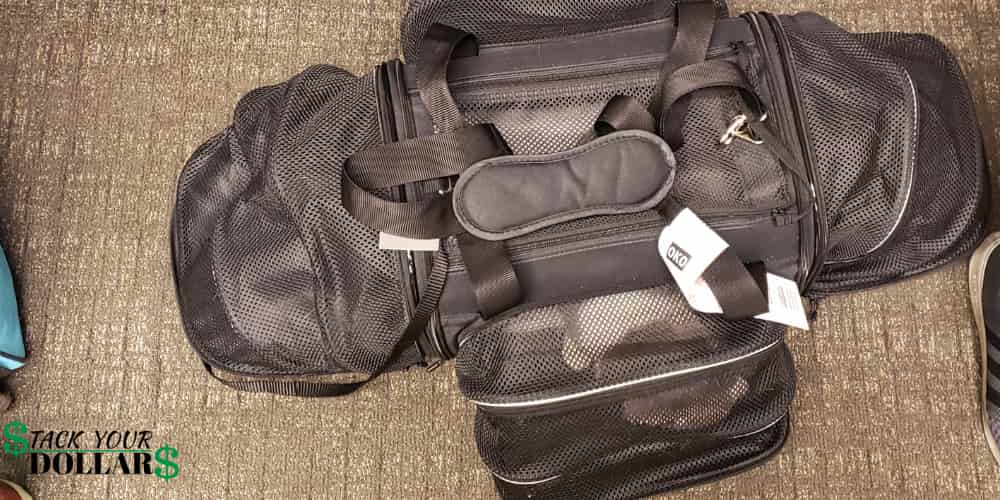
6 Months To Go
- April 6th- Blood test: I had chickenpox as a child but not the varicella vaccine. So… I had to do a blood test to verify immunity. My doctor also scheduled a full blood test for the physical while I was already there.
- April 22nd (Morning)- Physical & OSS Packet: Had my annual physical and the doctor filled out the packet. My husband went to turn it into the Medical clinic and was told that it wouldn’t be looked at until later in the year due to our PCS date.
- April 22nd (Afternoon) – Call from a contact at navy medical who expedited packet. Reviewed and asked me to get the missing flu vaccine.
- April 23rd- Part 2 screening: Due to the pandemic, this was done over the phone. The doctor reviewed my medical history, asked a few questions, then said I was good to go and would receive a call to pick up the packet.
- April 27th- Screening packet available for pickup
5 Months To Go
- May 18th- Career Counselor Meeting: This is an issue that many other people might not have. My husband was supposed to re-enlist soon to fulfill the orders, but that meant he would lose any SRB (Selective Reenlistment Bonus) qualified for. Instead, he was told he could sign an OBLISERV to re-enlist after transferring. The re-enlistment and/or OBLISERV is something required in order to get the DEA.
- May 29th- Antiterrorism Awareness Training: This could have been completed at an earlier date, but I honestly forgot about it.
4 Months To Go
- June 10- No-Fee Passport appointment
- June 15th (Morning)- The person in charge of drafting the OBLISERV kept promising to have it soon, but it was never done (even with Chiefs going to inquire about it). Therefore, an email was written CCing everyone and their mama to get the status of the OBLISERV and reiterate the importance of getting it to apply for DEA and HHG. I think this worked.
- June 15th (Afternoon)- DEA Application: In reply to the email, we were also told that the OLBISERV wasn’t required to get the DEA. We discovered that was incorrect when we sent the application for the DEA the same day and received an email asking for the OBLISERV a few days after.
- June 17th- OBLISERV received
- June 28th- DEA aka Dependent Entry Approval received
3 Months To Go
- July 15th- Reserved the Navy Lodge: I found out online that the lodge OCONUS was getting booked up quickly, so I called and reserved a room for our approximate dates. After getting the itinerary, these dates can be adjusted.
2 Months To Go
- Aug 7th- Itinerary received: During an Overseas PCS Workshop with Fleet and Family Support Center, I was told that the actual tickets are issued and paid for 3 days before the service member checks out of the command.
- Aug 12th- Picked up no-fee passport: Released when you bring in a copy of the itinerary
- Aug 12th- VPC Appointment: Set up a date close to the flights to turn in our vehicle for storage.
- Aug 18th- Applied for the Chase Sapphire Reserve Card: At this time, the intro bonus is 60,000 points ($600) for spending $4k in 3 months. This card was awesome to apply for at this point because we can charge all of our moving expenses to it, pay it off when reimbursed by the military, and basically get the intro bonus points for FREE. This card also gives you $300 per year in travel credits, which means extra money earned when reimbursed for TLE/TLA. The access to airport lounges will also be awesome during the long layovers. The annual fee is $450 but is waived for the military. NOTE: You have to sign up for the lounge access separately and it takes 2-3 weeks for the priority pass card.
- Sept 1st- UB Pack out: Despite thinking that I had a massive amount of things and they were overweight, my UB shipment was actually close to 800lbs after subtracting 10% for packing and the pro-gear (before it was under 1k lbs.). I had everything in one room and made a sign/ list to indicate High-Value Items and Pro-Gear. Other than that, we packed clothes in vacuum-sealed bags, shoes, cooking and baking supplies, seasonings in zip lock bags, cleaning supplies (no liquids), printer, air mattress, etc.
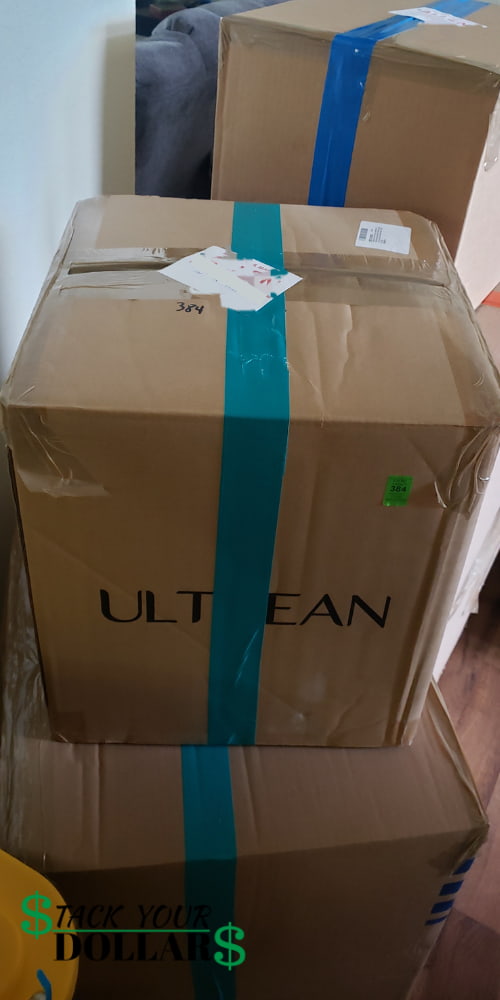
1 Month To Go
- Sept 20th- NTS Pack out:
- Sept 23rd- HHG Pack out: Our HHG pack out was delayed a day due to the moving company’s truck breaking down. Fortunately, we still had a few days to move out of the house. We had 5 movers scattered around the house packing and ran around putting our own labels on boxes, taking pictures with their inventory stickers on it, and making notes in our phones of what items were in what boxes. It was really helpful that we created a detailed inventory list on excel beforehand. NOTE: Our items were not crated at our home, but we did request to watch at the warehouse a few days later.
- “The In-between”: My family had a long wait between our HHG and flights. First, it’s because we had to choose a 7-day spread date for the HHG pickup and they went with the first day. So there’s 6 days to go living in an empty house. We bought an air mattress with pump and two camping chairs to survive (Cheaper at Walmart) then sell/donate after. Also, our flights were booked about a week after we wanted to leave and when my husband checks out of the command. NOTE: U.S. to Overseas moves only get 5 days of TLE.
- Sept 24th- Received paid flight tickets
- Sept 28th- Early check in: Since our move out inspection was early the next morning, we figured it would be beneficial to pay for an extra day at the Navy Lodge and move our things over early.
- Sept 29th- TLE starts: The front desk attendant at the Lodge kindly checked us out of and into the same room again. Doing this allows only the days covered by TLE to be on the receipt.
- Sept 29th- Vet appointment: My cat needed to have a health certificate in order to fly and enter the country. They are only valid for 10 days. We also received pills to make her more calm on the flight, but that barely worked if at all. I even tried this popular calming spray.
- Oct 1st- Vehicle storage: I’ve heard that the Vehicle Processing Center (VPC) is very particular about the cleanliness of the cars they accept. So the day before, we got a car rental and then spent all day cleaning our car. We also booked the earliest appointment available in case we were turned away for any reason, but everything turned out A-Okay! The whole process took maybe 1 hour for them to test the car and write down every little ding and scrape.
- Oct 2nd- Covid test #1
- Oct 3rd- Backup Covid test #2
Moving Week
- Oct 4th- The travel begins: Check-in was an easy process and we only had to pay $125 to carry a pet. The domestic airline we were booked on allowed for 5 bags each up to 100lbs when on military orders. However, the next flight with AMC out of Sea-Tac only allows 2 bags each up to 70lbs. (AMC also had a $125 pet fee.)
- Oct 4th- Sea-Tac: Earlier that day, we found out that our flight would be delayed, so our Oct 2nd Covid results were no longer valid and every testing location was closed. We spend the night sitting and stressing out in the USO lounge. But, we did receive free food and drinks. 30 minutes before the flight check-in, the 2nd set of test results came through.
- Oct 5th- Priority Pass: Remember the Chase Sapphire Reserve Card I mentioned 2 months ago? Thanks to that, we were able to get free breakfast at a restaurant in the airport. After check-in, there was still 8 hours until the flight. For the rest of the wait, we napped in the priority pass lounge which also had free foods, snacks, drinks, and adult beverages.
- Oct 6th- Arrival: We finally arrived at the AF military base in Japan around 6pm. After going through a security briefs, customs, and retrieving bags, we took a 2-hour bus ride to the base we’d be living in. At this time, we had to go straight to the Navy Lodge and quarantine for 10 days before testing out to roam around the base, and 14 days before leaving the base.
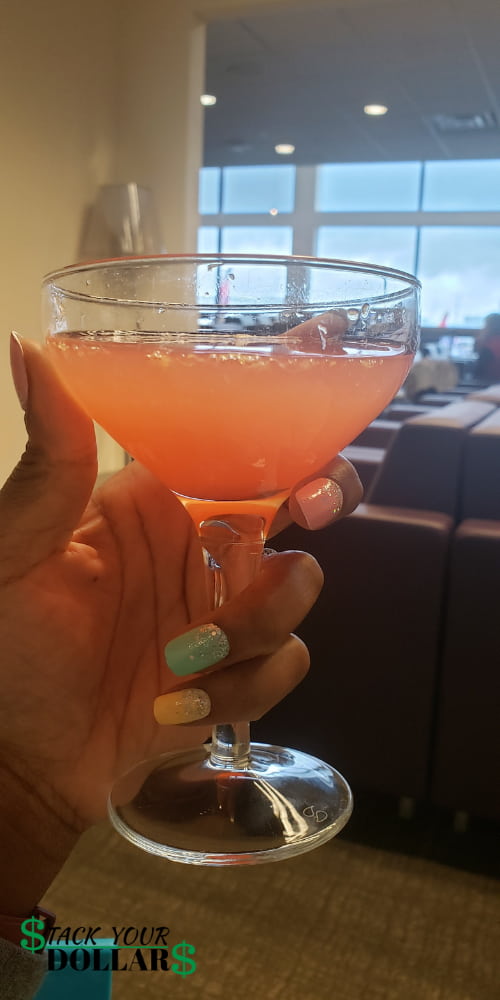
Post-Move
- Oct 16th- Move-In: We received housing and loaner furniture to tide over until the shipments arrived. I was so thankful to have brought a heated blanket, because it was freezing!
NOTE: Linens were not provided. Also, check to see if your FAST (Family Assistance Support Team) Office lends kitchen supplies. - Oct 28th- Received UB: Our UB express shipment was supposed to arrive by Oct 18th, but came 10 days late. We qualified to file for n inconvenience claim; however, they denied it and replied that it was the AMC terminal at fault for the delay.
- Nov 24th- Received HHG: It was a Thanksgiving miracle! We received our Household goods shipment after just 2 months and right in time to use the turkey baster and thermometer.
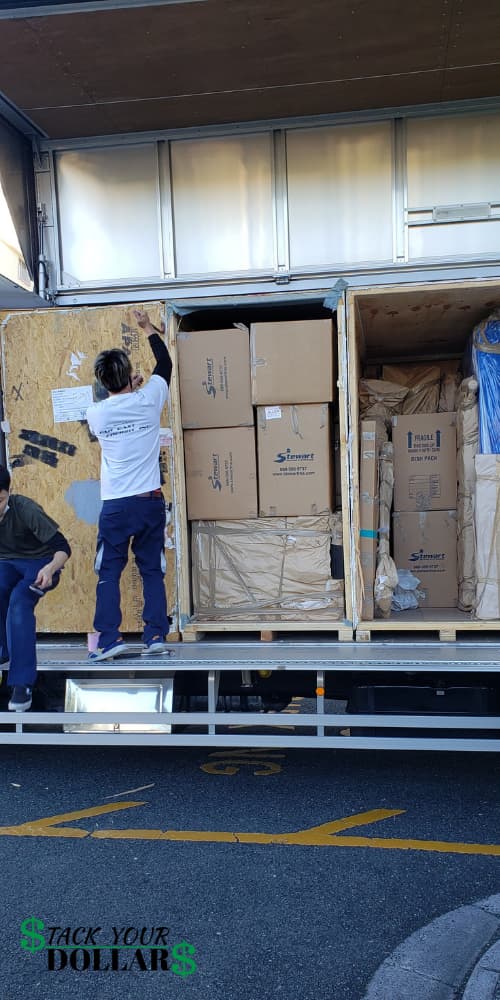
PCS Tips
- Create a moving binder to organize your paperwork. I purchased plastic sleeves to put the papers inside and dividers to separate by category. I also bought zippered binder pockets to hold things like passports and hotel receipts for reimbursement.
- Go through your home and declutter before moving. If you didn’t remember you had it, you probably don’t need it.
- Separate and organize items into zip lock bags
- Buy a bunch of these vacuum-sealed bags to safeguard clothes.
- Take photos and create an inventory of everything!
- Use something like this paper to create labels and put them on the outside of each box in your HHG shipment. I included our names, duty station, and email.
- Buy different colored duct tape to easily identify the boxes for each room. You can also find colored tape cheaper at the Dollar Tree. When they deliver your household goods, they move too fast to tell what’s in each box. SO organizing by color helps to know what room you can tell them to drop the boxes in.
- These yellow top totes are a popular option to store items and even use as checked baggage at the airport. You can also buy them for less than half the price at Costco.
- Ensure that you separate anything that shouldn’t be packed into a room that you block off.
- Take a look at my recommended cheap packing materials.
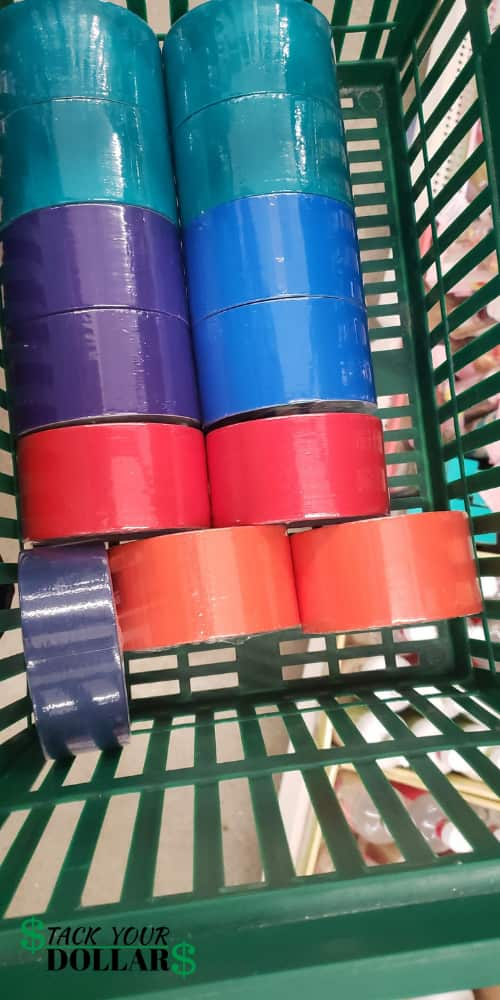
FAQ
Yes. You will typically receive an AMC and/or Commercial flight paid for by the government. Any pet fees required will not be covered.
Military dependents will need a no-fee passport for official travel. It is also recommended to have a regular passport for leisure travel, visiting home, and in case of emergencies.
For official travel, military members only need their military ID and a copy of their orders.
